I hate records. Well, I really like them. But I hate them. See, we are subject to their limitations… or at least two of them. Or three. The last one first. Finding them. For a while I have been grabbing images of maps including the sites of early breweries in Kingston. I have not seen the actual maps. Just the scans. So I realize that, over time, I have noticed that the maps do not focus on my needs but the needs of others. How surprising. But then I next realize there are other records I know nothing about. The maps above are from the 1790s, 1801, 1810, 1815, 1828, 1845, 1849, 1850, 1850, 1850, 1853, 1858, 1866 and 1869 respectively. There must be others. Yet, I know there isn’t the set I need. A set of maps about the Kingston Brewery first built no later than 1793 and then build up and added to… and renovated… then burned down then rebuild and added… and renovated… then burned down… and built again. What did we write about this spot in Ontario Beer?
In the garrison communities of Kingston and Niagara-on-the-Lake, larger and more formal breweries were founded to supply the colony generally and the troops in particular. They were built with government approval to provide beer to the colony and its protectors. In 1793, at Niagara-On-the-Lake, John Hewitt placed a notice announcing both establishment and official approval of his brewery. It was set to open in time for that year’s grain harvest. In that same year, John Forsythe built his brewery in Kingston at the south end of the aptly named Brewery Street. Forsythe appears to have been an investing capitalist, apparently without the skill or inclination to brew the beer himself. He moved through a number of partners and tenants before John Darnley took over operations in 1797. Darnley managed the brewery until 1810.
Steve Gates has more detail in his book The Breweries of Kingston and the St.Lawrence Valleybut the most interesting thing is that part of the structure of the brewery as it grew and aged and hung on and got turned into condos is still there. Which got me thinking… what is still there? So, we go to the maps. In the 1790 map, the road is called Brewery Street which makes one think there is a brewery on the street but the brewery is not shown where it is later shown. The 1801 map shows a couple of buildings on water lot “C” and the 1810 map names lot “C” as being in the hands of John Forsyth – no final “e”. So we know we have the right spot. The 1828 map shows the location of buildings in quite a realistic style oriented towards the shoreline just north of where it takes a 90 degree turn. A small Georgian colonial enterprise.The 1845 map shows one building sitting in the way of the northern ambitions of Wellington Street. It also shows water lot “C” as the property of Phillip Wenz who bought it in 1826.
The 1849 map is a peach. It shows the brewery clearly and also how the water lots are getting filled in. The brewery is starting to seem out of time with the surrounding land uses. It’s not on the first 1850 map. It is on the second one and seems to have a lane working its way around the front of it to take into account the odd orientation of the building. The shoreline is getting farther and farther away with all the filling going on. The last 1850 map and the 1853 one shows up to ten buildings located on water lot “C” all entirely higgle-piggle to each other. The 1858 one shows no brewery building but a whack of new fill proposed to take into account the snazzy new railway. The 1866 map shows Wellington now reaching all the way to Bay Street, built on fill, the brewery noted on the new street corner. By 1869, it appears the brewery is all neat and tidy and faces the road neat and tidily like all the other orderly Victorian structures in the neighbouring roads. None of your organic Georgian ways for this modern brewery.
What does all this mean? Well, there could be the recording of four or five configurations of the buildings. None of which were the location I noted in 2012. If you click on the left hand image at the top of this post, you can see some of the oddly oriented buildings were still there in 1908. And bits of that era continue today as you can see in this post from 2003 the building hundreds of feet inland from the 1824 waterfront location. It moved overtime. Reconfigured. If you had enough of the right records you could write an entire book on the history of that one patch of land. If you had the right records.


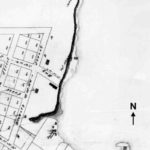

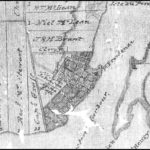

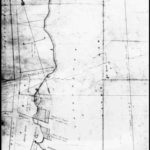

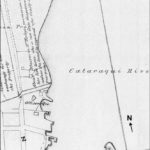


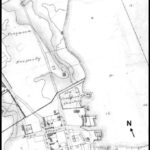
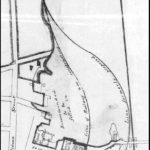
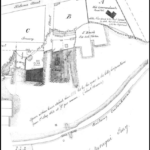

[Original comments…]
Steve Gates – February 27, 2015 10:41 AM
I have found the love hate relationship between John Graves Simcoe and the early brewers and distillers of the province an interesting topic to examine. Simcoe identified the immediate need of a these tradesmen as it pertained to the success of local agricultural endeavours but despised the “immigrant drunk.” Brewers like Forsythe and Hewitt walked point and proved ground during the most earliest of the province’s brewing starts. Cool article Alan, thanks for that.
Alan – February 27, 2015 11:09 AM
But, really, there is no way that from 1783-93 that the community is doing without. Guys like Stone in Ganonoque and the others were making beer but just not commoditizing it or even recording it. That’s what I suspect. Or, maybe Simcoe and the others had a stake in the rum and molasses trade so autonomous brewers are not the issue. Yet, when you read about life in Kingston being a drunken hellhole on the edge of empire in the 1780s to maybe 1820s, Simcoe may well have had a point. He was a semi-utopian in a Tory clique kinda way.
Steve Gates – March 8, 2015 1:11 AM
I agree that Simcoe’s objectives were slightly fanciful and quasi-utopian in nature but despite this, I believe his heart was well positioned. I have always considered Kingston as the start point for community brewing but alas, Bath is the popular choice based on what has been recorded. Henderson, a Kingston based brewer, gets the nod at York but it begs the question…where the hell did he brew in Kingston?? I have not found his name anywhere that I have sleuthed. The rum trade or the potash trade is something I can understand in terms of it’s value and relative popularity but what made molasses so indispensable…I think I ate that shit once in the last twenty years.
Alan – March 8, 2015 1:19 PM
Spruce beer. Some records I have seen indicate that it was frontier boozy ginger ale with not a bit of grain in it. Three day turnaround, too.
I thought this land petition of John Hewett for his brewery may be of interest to you.
https://www.collectionscanada.gc.ca/microform-digitization/006003-119.01-e.php?PHPSESSID=npfo6qij0n1rpue06msk2mqnj1&sqn=245&q2=29&q3=2464&tt=990
Thanks Lisa, very interesting, especially discovering the name George Playter being involved.